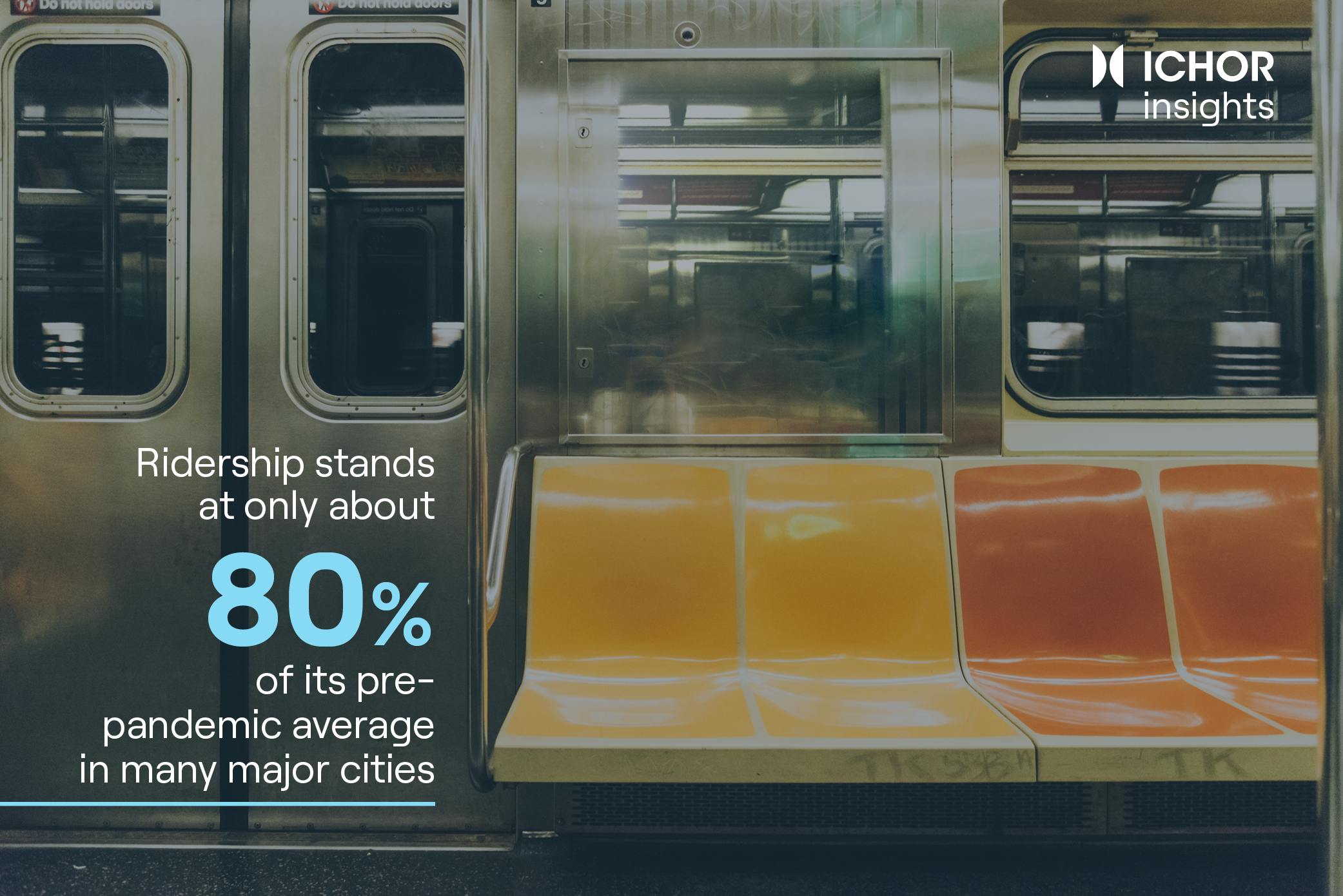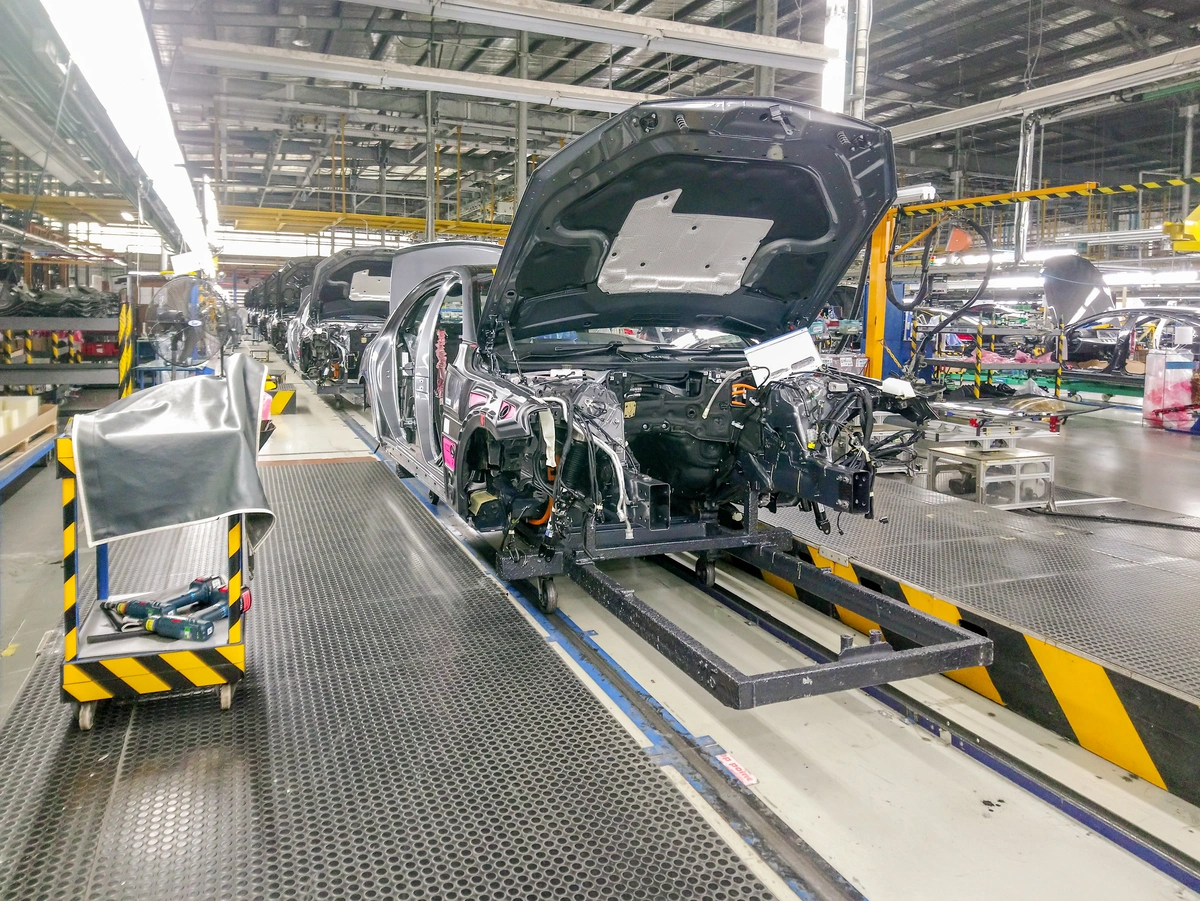Healthy public transit systems are an imperative in 21st-century America. They connect our communities, enable mobility, and underpin our economies. In an era of increasing urgency around climate change, they do it all more efficiently and cleanly than motor vehicles, and at a moment of increased polarization, they put tech workers, bankers, and custodians shoulder to shoulder on the ride to work.
Yet as the COVID crisis recedes, the challenges facing our nation’s transit systems are acute. Ridership stands at only about 80% of the pre-pandemic average in many major U.S. cities. Public trust in transit is lower as reliability has suffered, and crime has surged. The budget gaps are enormous and risk setting off a transit doom loop: if the system isn’t reliable, people won’t use it, which will reduce ridership, choke off revenue, and so on.
But at this moment, transit leaders have a unique opportunity to reset and remake our transportation infrastructure, not just to resume the same old operations as before the pandemic. It’s time to think big — not just rebuilding but renewing — and do so with a focus on inclusivity, efficiency, and reliability.

Federal Money Is Crucial: For Transit, the COVID Crisis Isn’t Over
Federal dollars will be critical. The Infrastructure Investment and Jobs Act (IIJA) contained nearly $90 billion for public transit projects. But that money is for capital projects. While the federal government sent billions of dollars in COVID relief to America’s transit systems to cover operating shortfalls during the pandemic, that funding is drying up at a time of decades-high inflation and as fare collection remains dramatically below pre-pandemic levels.
The results have decimated the operating finances of many systems. While states like New York have sought to shore up the finances of their critical mass transit systems, it’s been clear since even before the COVID crisis, when many systems were already dealing with collapsing finances, that a regular federal operating stream would be of great assistance.
Such an argument has always been a tough sell in Washington, but it’s never been more important. The reality is that mass transit is the lifeblood of many regional economies, serving as the great equalizer for those who can’t afford cars or for-hire vehicles.
And a robust transit system serves as a key tool in the fight against climate change by encouraging more people to get out of their cars and onto subways, buses, and trains.
The oft-repeated pushback to calls for federal mass transit funding is that the agencies that stand to benefit have suffered too often from waste, fraud, and abuse. If Congress is to approve a regular funding stream for transit systems, the agencies themselves will need to prove they will be good stewards of the money. That includes working collaboratively with their labor unions to find meaningful cost savings.
Intensive federal oversight of the funds will also be critical. If the systems don’t live up to their end of the bargain, the money can always be cut.
On the State and Local Level
The states and localities must also step up to help their systems. As we saw during the pandemic, many of the essential workers we all hailed as heroes — doctors, nurses, pharmacists, delivery people, and those operating and cleaning the transit systems themselves relied on public transportation, even if the communities in which they work are oriented around cars and drivers. It’s important that residents and representatives of those communities remember that robust transit options are crucial for those workers, as well as being tools of equity.
New York State stepped up this spring to help the Metropolitan Transportation Authority, North America’s largest public mass transit system, by providing a dedicated funding stream to help make up for depressed fare revenue with a package that included a small payroll tax increase on New York City businesses. In the same package, it was agreed that if up to three new casinos are licensed in downstate New York, large chunks of revenue will be directed to mass transit.
What Else Can Be Done?
Transit systems in return must do their share and show they can be creative and attentive, particularly in addressing shifting demographics. For instance, as more people increasingly work from home post-COVID, systems can provide more flexible scheduling options as well as financial benefits to lure more riders back to public transit and to their offices. Having more people work outside the home benefits entire communities that rely on workers to shop, eat at local restaurants, and socialize, which helps the overall economy.
To that end, transit officials should also work even more intently than they have with business leaders, riders, and others to generate forward-thinking ideas to draw people back to the subways, trains, and buses.
That includes addressing crime issues. It’s a simple fact that people won’t use mass transit if they don’t feel safe.
The 20th century in America belonged to the automobile and to sprawl. The 21st and beyond has the chance to be greener, more connected, and built more efficiently. Transit is a pivotal opportunity to make that happen, but only if it can survive and thrive-- and not be allowed to slowly disintegrate.
Ken Lovett leads Ichor’s Government Practice and is a former Senior Advisor to the Chair and CEO of the New York State Metropolitan Transportation Authority, the largest public mass transit system in North America. He is also an award-winning former journalist and communications expert with the New York Daily News and the New York Post. He is based in Albany.
Chelsea Ordóñez Barreto has extensive experience conducting research on transit-oriented development and affordable housing. She is a member of the Community team and is based in New York City.




